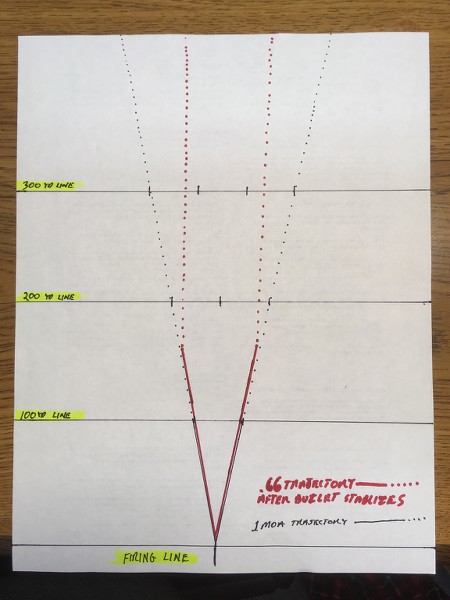I know what yaw is and that is/was not my point . Even if the bullet is crazy unstable/yawing out to 100yds then settles down and flys perfectly straight from there . The group at 300 yards is not going to be smaller then the best groups at 100 , is all my point is . I don’t care if the bullet is tumbling out to 100yds then Stabilizes and flies true after that . The group is not going to be better at 300 then the best at 100 unless the bullet changes it’s trajectory/direction between 100 & 300yds .
If the bullet can shoot a smaller group at 300 then it does at 100 . It would be reasonable to conclude the groups will continue to get smaller the further the bullet travels ?
Are you saying the yaw effect has a constant and reliable effect that reduces group size the further out the bullet travels.
Metal God,
I am onboard with your style of thinking. Inertia certainly seems to agree with you here. Once the projectile is headed off course for any reason, the only way to reconcile that would be a change in trajectory.
Discussing spin drift, yaw, group size, is discussing what the bullet is doing. I have not really read where anyone has considered the effect that a yawing bullet will have at supersonic speeds. Personally, I think that the air is more like a fluid at high speeds. The increased air around the bullet would do one of two things. Either it would force the spinning bullet to stabilize, or it would erratically change the trajectory of the projectile. The problem here is understanding how each force is applied to each shot. The fact of the matter is that each shot should be seen as an individual, with specific circumstances relative to itself. A yawing bullet, even if it stabilizes will always continue to move off from the potential trajectory it had at the beginning.
I theorize that people wo experience this phenomenon are not properly accounting for forces applied to the bullet along the entire trajectory. As you mentioned, if your shot is off in the opposite direction the yaw caused the bullet to travel you might see a slight improvement at distance. But that certainly would not be repeatable under controlled circumstances. Are the people observing this effect accounting for temperature, terrain, every possible variation of wind, are the accounting for gravity based on angle cosign? There are so many variables involved that no answer could reasonably expected to be true without eliminating every variable. To consider the bullet's flight without also considering the medium it flies through is a non starter from my perspective.
Seems this would be something best tested in a vacuum, and in a pressurized controlled environment. If the effect is not observed in the vacuum, we could deduce that the effect must be the result of forces present in the atmosphere. If the effect is observed in a vacuum and a controlled atmosphere, then more research to determine why this is possible would be in order.
I am not convinced this is indicative of the bullet's physical properties. It must be the result of other forces causing the effect.



